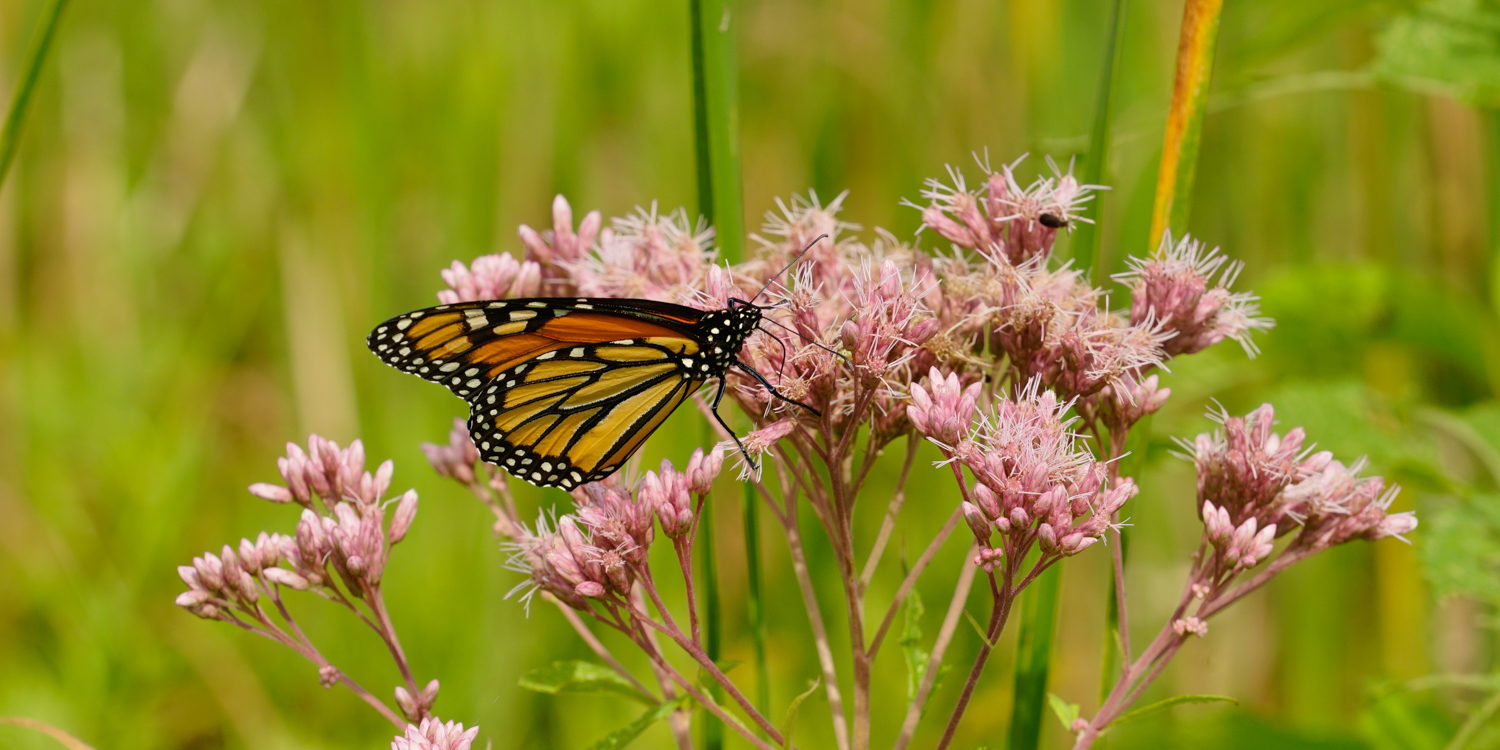The Nature Of: Monarch Butterflies

By Ken Benton, NBNC Teacher/Naturalist
The old sheep field that comprises the majority of the NBNC property comes alive every summer with the sweet scent of blossoming flowers and the squeals of joyful children stalking the field with butterfly nets. Common Ringlets, Northern Crescents, and Clouded Sulphurs frequently flutter about the swinging nets, but the real excitement comes when someone spots the large orange and black wings of a Monarch butterfly gliding just above the purple milkweed blossoms. A cry of “MONARCH!” sparks a mad dash of children wading through waist-high plants, trying to catch up to the butterfly that always dances away to another corner of the milkweed patch.
Those who wait patiently by a cluster of blossoms for a Monarch to glide in for a sip are the ones rewarded with lepidoptera royalty in the net. The Monarchs we catch in early fall are logged and outfitted with tiny Monarch Watch stickers before being released back onto their amazing 2,500-mile migratory journey to Mexico.
Sadly, in recent years the number of Monarchs in our field and throughout the eastern US has dropped dramatically. Monarch populations are best measured by the size of their dense overwintering colonies in the Oyamel Fir forests of Mexico’s Sierra Madre mountains, where during a good winter they pack in so tightly that the forest turns to a sea of orange. In the mid-1990s the colonies covered nearly 45 acres, whereas in the winter of 2013-14, they dwindled to a scant 1.6 acres.
The precipitous decline of the eastern US population is closely linked to loss of habitat through the large-scale spraying of herbicides on corn and soybean crops. This practice may lead to greater crop yields, but unfortunately it also led to the loss of important pollinator plants like milkweed. As the obligate host plant for the Monarch caterpillars, when milkweed declines, so do Monarchs. Diminished populations lead to greater susceptibility to other environmental factors like weather. A severe storm at the wintering grounds or a drought in Texas during migration used to play just a minor role in the year-to-year number of Monarchs. Now a single storm could feasibly wipe out the entire population.
There is good news though. Over the last few years, Monarchs have been making a comeback. The World Wildlife Fund Mexico’s 2018-19 survey of overwintering sites revealed that the total area covered by Monarch colonies increased to almost 15 acres (a 144% increase from 2017-18). Experts attribute the increase to ideal weather conditions during the 2018 breeding and migration seasons, which means Monarchs aren’t out of the woods yet. Long-term success of the species will depend more upon increased habitat than lucky weather. So if you can, choose organic, herbicide-free food products, and dedicate a corner of your yard as a caterpillar nursery by letting those beautiful purple milkweed flowers bloom! If we do our part, Monarch butterflies will continue to dance above the outstretched nets of joyful children for generations to come.

